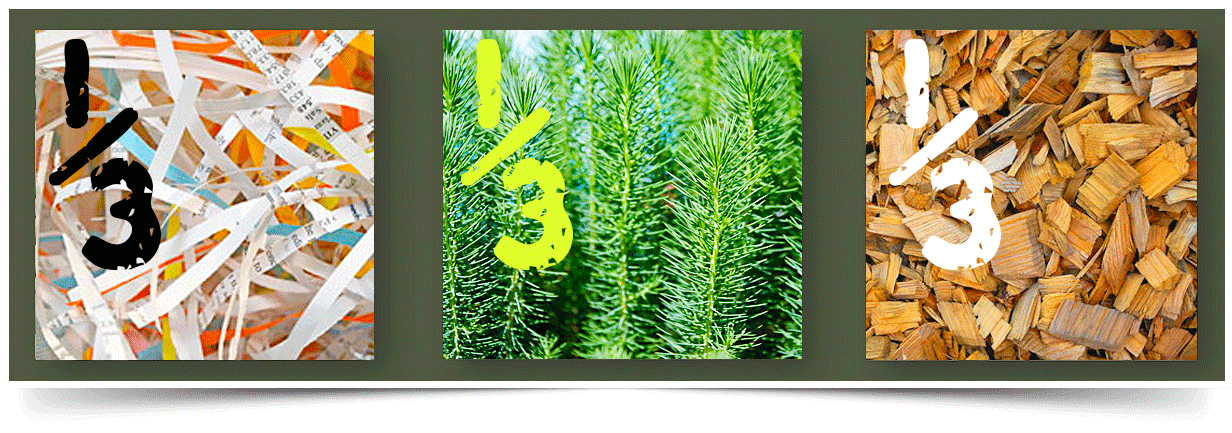

What's the Truth about the Environmental Impact of Print?
There are many popular misconceptions about the impact that printed materials have on the environment. However, the idea that print is detrimental to the environment is factually wrong.
Myth: Paper is Made from Fresh-Cut Trees
Reality: Paper is Made Primarily from "Waste" Products
In the United States, the vast majority – a full two-thirds – of the fiber used to make paper comes from sources other than fresh-cut trees. One-third comes from wood chips and sawmill scraps, one-third comes from recycled paper and just one-third comes from "new growth" trees.1
Of course, these statistics are based on industry averages. There are 113 mills in the United States that use recovered fiber exclusively.2
Myth: Print Leads to Deforestation
Reality: Print Promotes Trees
Contrary to commonly-held belief, paper mills are not cutting down old-growth forests in order to make paper. Nearly all the wood used in paper production comes from "tree farms" – acres of trees grown as a renewable crop, like broccoli or wheat. Family forest owners own 35% of U.S. forestland, and the majority own small parcels of land. For many of these families, having strong wood markets (including the demand created by print) means the difference between holding onto their land and selling it.3 Once sold, this land is often developed. As Dr. Patrick Moore, Co-Founder of Greenpeace, has stated, "Using wood sends signals to the marketplace to grow more trees."
Myth: The Tree Population is Shrinking
Reality: More Trees and Forests Exist Today Than 20 Years Ago
With the increased demand for printed goods that we've seen over time, many people believe that the forests must be shrinking. This is simply not true. In the U.S. private landowners plant four million trees every day, and for the past 100 years the total forest area in the U.S. has been stable, even growing by two million acres between 2000 and 20054. With so many trees being planted, there are 20% more trees in the U.S. today than there were on the first Earth Day celebration more than 40 years ago.5
011317
1Technical Association for the Pulp and Paper Industry, "Questions & Answers from TAPPI," page 11.
2American Forest and Paper Association, "Fun Facts," accessed January 2017.
3American Forest Foundation, "Building with Wood Helps Keep Forests as Forests," 2014.
4Ibid
5American Forest and Paper Association, "Fun Facts," accessed January 2017.













